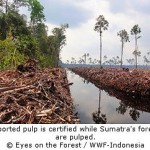B. Greenhouse Gas Emissions (CO2 Equivalents)
Recycled HDPE and PET resin production generates significantly fewer greenhouse gases than does the production of virgin HDPE and PET resins. Depending upon the resin and allocation methodology, the recycled resins generate between 35-78% less greenhouse gases during production than do comparable virgin resins. (As shown below in Table 2 and as expected, the relative results versus virgin resins are similar to the energy consumption figures stated above.)
Table 2: Greenhouse Gas Emissions: Lbs. of CO2 Equivalents Generated Per 1000 Lbs. of Resin Produced

C. Solid Waste
While the topline solid waste figures for recycled resins are higher than for virgin PET and HDPE, a closer analysis indicates that solid waste from recycled resin processing may actually be viewed as significantly less than waste from virgin resin processing. The difference relates to the fact that the topline waste numbers for recycled resins include co-mingled contaminants, which are not technically part of the recycled virgin production process. (See Table 3)
To quote from the original study:
“The process wastes shown for recycled resin production are largely contaminants that were co-collected with the recovered plastic and are separated from the recovered material during sorting and separation processes. Although the contaminant wastes are removed and disposed at facilities where recycling processes occur, these wastes are not caused by recycling processes. The data provided by material recovery facilities and reclaimers for this study show that all usable materials are recovered from the incoming material received wherever possible, including materials other than the desired resin. Therefore, the majority of the solid waste disposed from the sorting and processing operations is material that would have been disposed as waste regardless of whether postconsumer plastic recycling takes place.”
Table 3: Solid Waste: Lbs. Generated Per 1000 Lbs. of Resin Produced

V. Conclusion
Postconsumer recycling of PET and HDPE resins has a positive impact on the overall environmental footprint associated with the production, use and disposal of these materials. Recycled HDPE and PET resin production consumes significantly less energy, generates significantly fewer greenhouse gases, and produces less solid waste than does the production of virgin HDPE and PET resins. Thus, consumer recycling of packaging made primarily from PET and HDPE should be encouraged among consumers, municipalities, businesses, and government.
VI. Indicated Actions
Businesses that manufacture products from recycled resins should actively promote the fact that they are doing so. The best way to reinforce the value of plastics recycling is for consumers to experience and use products made from recycled resins.
Notes:
To read a more detailed review of the study, check the link http://use-less-stuff.com/ULS-LCI-Study-Summary.pdf
The full study described above is available at http://www.use-less-stuff.com/2010-research/Recycled-PET-and-HDPE-LCI.pdf
The ULS (Use Less Stuff) Report is a highly respected and widely read newsletter aimed at spreading the benefits of source reduction (ULS means Use Less Stuff) and is publish monthly. The ULS website is rated #1 by Google, Yahoo! and MSN for searches relating to waste prevention and source reduction. For further information, visit the website at http://www.use-less-stuff.com/
Robert Lilienfeld is Editor of The ULS Report. Both Bob and The ULS Report have received significant national attention via features in various print media as well as a wide variety of network television and radio programmes. Bob’s work in the areas of source reduction and waste prevention is known internationally as well.













